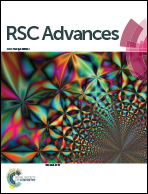Rapid discovery and identification of multiple absorbed chemical constituents and metabolites in rat cerebrospinal fluid after oral administration of Jitai tablets by a LC-MS based metabolomics approach
Abstract
An integrative strategy using LC-Q/TOF-MS and LC-QqQ-MS/MS coupled with multi-variate statistical analysis of principal component analysis (PCA) and orthogonal partial least squares discriminant analysis (OPLS-DA) was developed to screen and identify the constituents transported into the rat cerebrospinal fluid (CSF) after oral administration of Jitai tablets (JTTs). CSF samples were pretreated with cold methanol prior to liquid chromatography, and the separation was carried out on a HSS T3 column with a linear gradient elution. Mass spectra were acquired in positive ion mode for analyte identification and targeted MS/MS mode for quantification. In the S-plot of OPLS-DA, twenty-six interested ions were extracted, among which, sixteen absorbed prototype components of JTT and seven metabolites were identified in vivo. Cysteine conjugation, demethylation and glucuronidation were the major metabolic reaction types of the identified constituents. An LC-MS/MS method with targeted multiple-reaction monitoring of scopolamine, tetrahydrocoptisine, tetrahydroberineper, protopine, tetrahydropulmatine and corydaline in rat CSF was developed to validate the identification results. The concentration of the six compounds in rat CSF was in the range of 0.014–1.678 ng mL−1. In conclusion, a LC-MS based metabolomics approach can provide a rapid and sensitive method for characterizing bioactive components of JTT at micro concentration on pathological biopsy, which benefits further pharmacology and mechanism research of JTT.


 Please wait while we load your content...
Please wait while we load your content...